What it the best way to plot a vertical line using Octave?
3 Answers
So, I have two methods for this. One, I found, and the other I made up.
Method 1: From here.
%% Set x value where verticle line should intersect the x-axis.
x = 0;
%% plot a line between two points using plot([x1,x2],[y1,y2])
plot([x,x],[-10,10]);
Method 2: A slightly different approach, exact same result
%% Setup a vector of x values
x = linspace(0,0,100);
%% Setup a vector of y values
y = linspace(0,10,100);
%% Plot the paired points in a line
plot(x,y);
I think Method 2 may write more information to memory before the plot process and it's a line longer, so in my eyes, Method 1 should be the better option. If you prefer Method 2, make sure your x and y vectors are the same dimension or you'll end up with a bunch of dots where you're line should be.
- 2,990
- 6
- 27
- 42
-
2your Method 2 is not only more memory before the plot, it takes more memory all the time. The data used to make a plot is still in the figure (take a look at the `cdata` in the figure properties). And your method 1 works fine, why making it more complicated by showing a worse way to do exactly the same thing? – carandraug Sep 08 '14 at 13:14
-
@carandraug the second method is even the recommended way in the octave programming tutorial to get a dotted vertical asymptote lines (compare https://en.wikibooks.org/wiki/Octave_Programming_Tutorial/Getting_started) – rexford Jul 10 '18 at 19:52
Unfortunately the Octave documentation for doing obvious things can be ridiculously lousy with no working examples. Drawing a simple line on top of a plot is one.
As already mentioned, it's is very silly to plot straight lines in octave. It's a waste of memory and processing. Instead use the line() function, to draw on top of your plot.
The line() function require 2 non-standard x-values and y-values vectors, instead of the standard point-slope arguments for point A and point B, normally represented by (x1,y1) and (x2,y2). Instead, you need to write this as: X=(x1,x2) and Y=(y1,y2). Thus confusing every living soul!
Here is an example of the correct way to do this in Octave language:
pkg load statistics % Need to load the statistics package
x = randn (1,1000); % Normal Distribution of random numbers
clf; histfit(x) % Make a histogram plot of x and fit the data
ylim ([-20,100]) % Change the plot limits (to lift graph up)
% Draw the (vertical) line between (0,-10) and (0,90)
line ("xdata",[0,0], "ydata",[-10,90], "linewidth", 3)
With the result:
- 14,531
- 8
- 95
- 135
-
`plot` produces the exact same result as `line`, it is a high-level interface for the low-level `line` function. The inputs are the same, except with `line` you need to specify everything as key-value pairs. There is no advantage to using `line` IMO. – Cris Luengo Mar 23 '19 at 15:14
notation (x1,x2),(y1,y2) is really confusing and against textbooks.
Anyway, this is my way:
figure;
hold on;
% vertical line x=0
plot([0,0],[0,10]);
%horizontal line y=0
plot([0,10],[0,0]);
% vertical line x=2
plot([2,2],[0,10]);
hold off;
- 217,595
- 99
- 455
- 496
- 67
- 4

